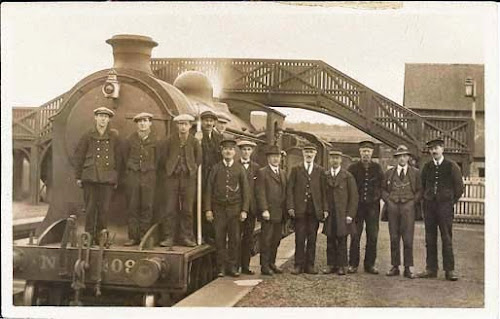
My tenth blogging anniversary almost past me by - thank you to geneabloggers.com for reminding me in their anniversary listing. I don't know how I am still here, as I never expected to last this long, when I tentatively wrote my first post back in August 2010.
 Ten years ago, I thought I would soon run out of material, but the online prompts and inspiration from other bloggers have been so stimulating. Discovering
two (third) cousins, one from my birth town, and one in the USA, gave
me a shot in the arm, in providing me with with fresh stories.
Ten years ago, I thought I would soon run out of material, but the online prompts and inspiration from other bloggers have been so stimulating. Discovering
two (third) cousins, one from my birth town, and one in the USA, gave
me a shot in the arm, in providing me with with fresh stories. - Given lockdown and the cancellation of a holiday in April, I decided at the last minute to take part in the mega April A-Z Blogging challenge of 26 posts in the month - my theme Family History Meets Local History. I just about survived the hectic pace!
- For the third year running, I joined Amy Johnson Crow's "52 Ancestors in 52 Weeks" challenge - though this year I was quite selective in which prompts I responded to, to avoid being repetitive.
- Another main blogging activity again has focused on writing for the prompt Sepia Saturday,
but it is becoming increasingly difficult for me not to
repeat photographs I have shown before. Unfortunately the attempt a few years ago year to change slightly the format of the site meant that many
regular bloggers pulled out of contributing. A pity as I valued their
input on a site which actively encourages bloggers to comment and
provides a friendly, supportive network.
- My main aim for 2020 has been to diversify. I admit I am a "flitter" dodging between one aspect of my family history to another, and lacking focus. I was also very aware that so much of my attention was on my mothe's Danson family which was a great source of stories, documents and photographs.
- The promp "Through Her Eyes Thursday" encourged me to look more closely at almost forgotten female ancestors and to bring them out of the shadows.
- My main research in recent months has been on my father's Weston family where I had little beyond names and dates, no anecdotes, and very very few photographs, but much help from some excellent local history society Facebook pages.
- Continuing the blog I set up in 2015 for my local heritage group - Auld Earlston -
is a challenge, espcially when it comes to managing two blogs - but
very enjoyable all the same. Plus it has provided me with additional
material for my personal blog, which is great!
- I continue to read regularly Facebook genealogy pages , notably Geneablogers.com for its prompts and weekly listing of blog posts; and We Are Genealogy Bloggers providing a forum for discussion, sharing knowledge and ideas on all matters relating to the act of blogging.
- I also have found very useful the Facebook page Genealogy Addicts UK & Worldwide Research Group which specialises in brick wall issues. Two of my own queries brought an immediate flood of helpful responses, though at the end of the day, the consensus backed up my thinking - and my brick walls still stand! I enjoy reading the entries from other family historians and sharing my own knowledge, especially when it comes to Scottish research.And finally - I have taken the plunge and sent away for my DNA. I have very few living relations, a cousin and three of my mother's cousins, none of whom are on the inernet, and a brother. But I was encouraged to just test myself - and I hope I can understand the results!
THANK YOU ALL FOR THE SUPPORT FROM MY FELOOW BLOGGERS

*************





































